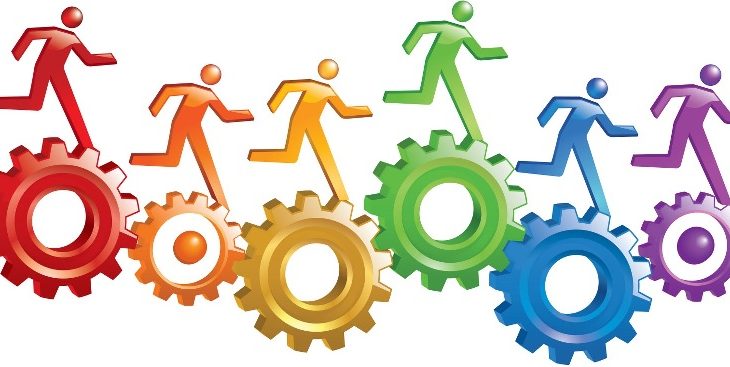The main difference between Personnel Management and Human Resource Management lies in their scope and orientation. While the scope of personnel management is limited and has an inverted approach, wherein workers are viewed as tool. Here the behavior of the worker can be manipulated as per the core competencies of the organization and are replaced when they are worn-out.
On the other hand, human resource management has a wider scope and considers employees as the asset to the organization. It promotes mutuality in terms of goals, responsibility, reward etc. that will help in enhancing the economic performance and high level of human resource development.
In early centuries, when Human Resource Management (HRM) was not prevalent, then the staffing and payroll of the employees were taken care of, by the Personnel Management (PM). It is popularly known as Traditional Personnel Management. Human Resource Management have emerged as an extension over the Traditional Personnel Management. So, in this article, we are going to throw light on the meaning and differences between Personnel Management and Human Resource Management.
Comparison Chart
| BASIS FOR COMPARISON | PERSONNEL MANAGEMENT | HUMAN RESOURCE MANAGEMENT |
| Meaning | The aspect of management that is concerned with the work force and their relationship with the entity is known as Personnel Management. | The branch of management that focuses on the most effective use of the manpower of an entity, to achieve the organizational goals is known as Human Resource Management. |
| Approach | Traditional | Modern |
| Treatment of manpower | Machines or Tools | Asset |
| Type of function | Routine function | Strategic function |
| Basis of Pay | Job Evaluation | Performance Evaluation |
| Management Role | Transactional | Transformational |
| Communication | Indirect | Direct |
| Labor Management | Collective Bargaining Contracts | Individual Contracts |
| Initiatives | Piecemeal | Integrated |
| Management Actions | Procedure | Business needs |
| Decision Making | Slow | Fast |
| Job Design | Division of Labor | Groups/Teams |
| Focus | Primarily on mundane activities like employee hiring, remunerating, training, and harmony. | Treat manpower of the organization as valued assets, to be valued, used and preserved. |
Definition of Personnel Management
Personnel Management is a part of management that deals with the recruitment, hiring, staffing, development, and compensation of the workforce and their relation with the organization to achieve the organizational objectives. The primary functions of the personnel management are divided into two categories:
- Operative Functions: The activities that are concerned with procurement, development, compensation, job evaluation, employee welfare, utilization, maintenance and collective bargaining.
- Managerial Function: Planning, Organizing, Directing, Motivation, Control, and Coordination are the basic managerial activities performed by Personnel Management.
From the last two decades, as the development of technology has taken place and the humans are replaced by machines. Similarly, this branch of management has also been superseded by Human Resource Management.
Definition of Human Resource Management
Human Resource Management is that specialized and organized branch of management which is concerned with the acquisition, maintenance, development, utilization and coordination of people at work, in such a manner that they will give their best to the enterprise. It refers to a systematic function of planning for the human resource needs and demands, selection, training, compensation, and performance appraisal, to meet those requirements.

Human Resource Management is a continuous process of ensuring the availability of eligible and willing workforce i.e. putting the right man at the right job. In a nutshell, it is an art of utilizing the human resources of an organization, in the most efficient and effective way. HRM covers a broad spectrum of activities which includes:
- Employment
- Recruitment and Selection
- Training and Development
- Employee Services
- Salary and Wages
- Industrial Relations
- Health and safety
- Education
- Working conditions
- Appraisal and Assessment
Key Differences Between Personnel Management and Human Resource Management
The following are the major differences between Personnel Management and Human Resource Management:
- The part of management that deals with the workforce within the enterprise is known as Personnel Management. The branch of management, which focuses on the best possible use of the enterprise’s manpower is known as Human Resource Management.
- Personnel Management treats workers as tools or machines whereas Human Resource Management treats it as an important asset of the organization.
- Human Resource Management is the advanced version of Personnel Management.
- Decision Making is slow in Personnel Management, but the same is comparatively fast in Human Resource Management.
- In Personnel Management there is a piecemeal distribution of initiatives. However, integrated distribution of initiatives is there in Human Resource Management.
- In Personnel Management, the basis of job design is the division of work while, in the case of Human Resource Management, employees are divided into groups or teams for performing any task.
- In PM, the negotiations are based on collective bargaining with the union leader. Conversely, in HRM, there is no need for collective bargaining as individual contracts exist with each employee.
- In PM, the pay is based on job evaluation. Unlike HRM, where the basis of pay is performance evaluation.
- Personnel management primarily focuses on ordinary activities, such as employee hiring, remunerating, training, and harmony. On the contrary, human resource management focuses on treating employees as valued assets, which are to be valued, used and preserved.







